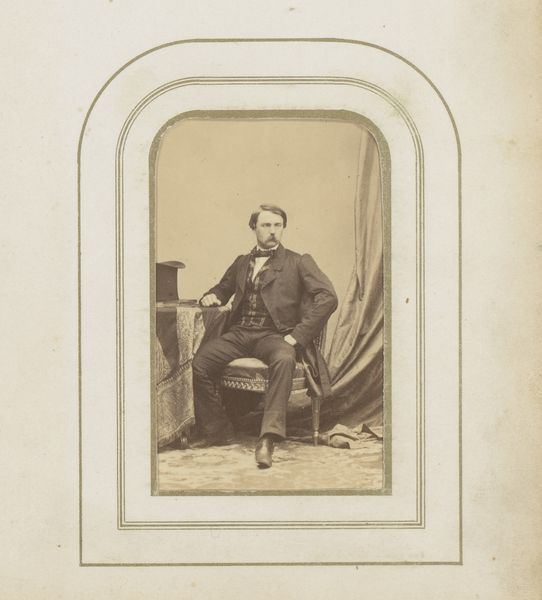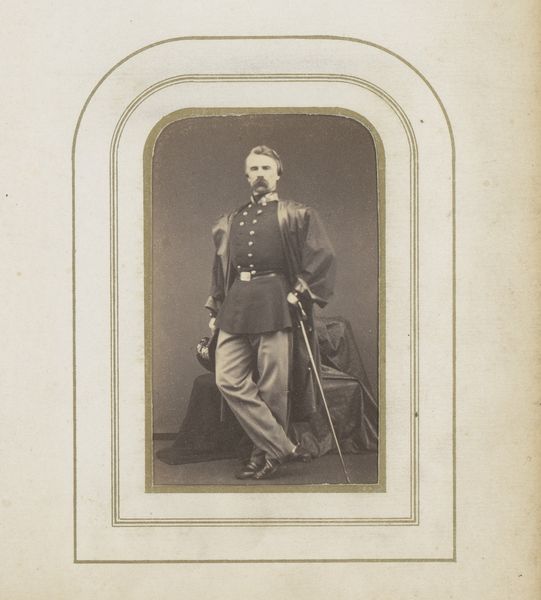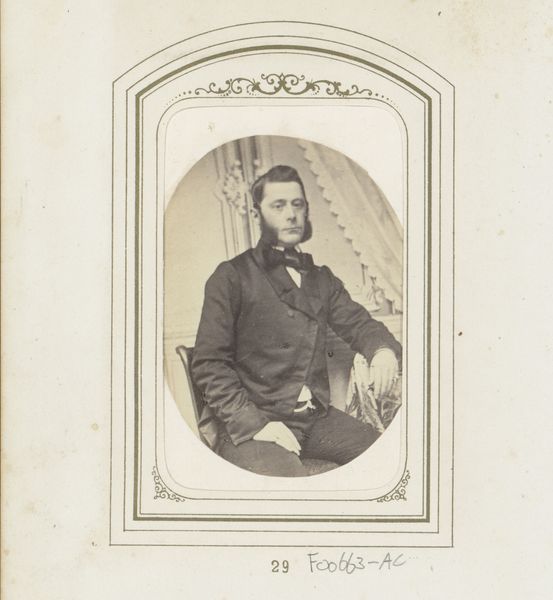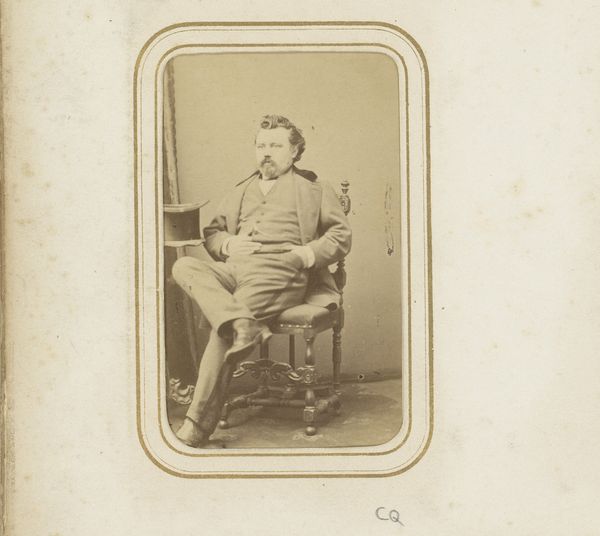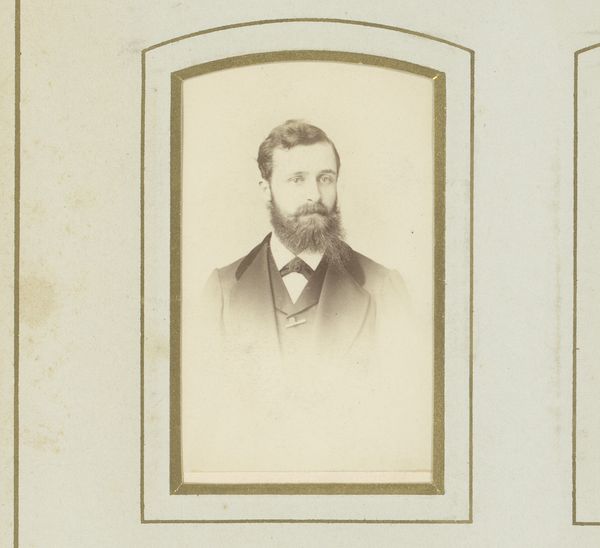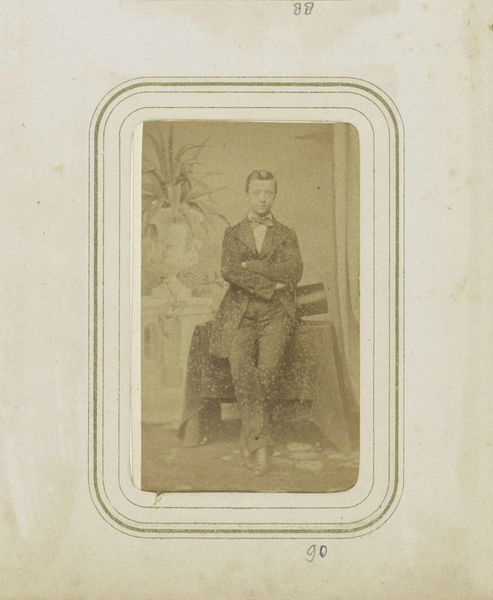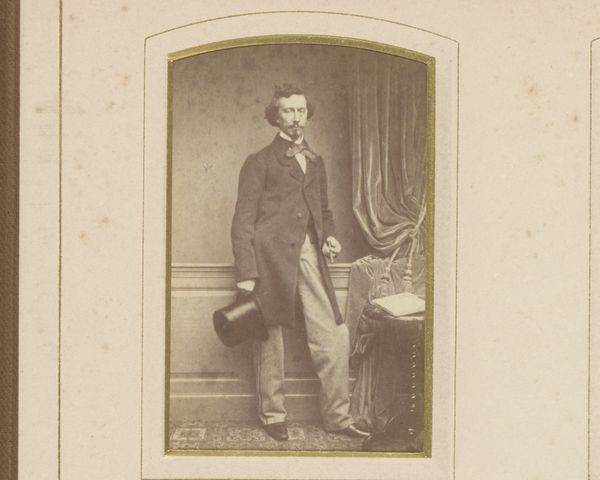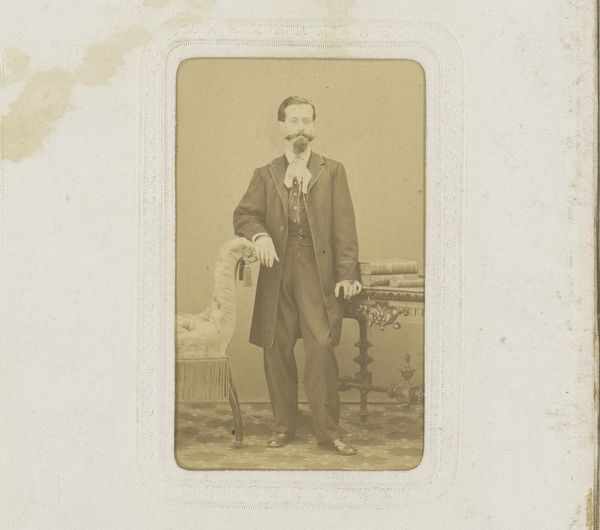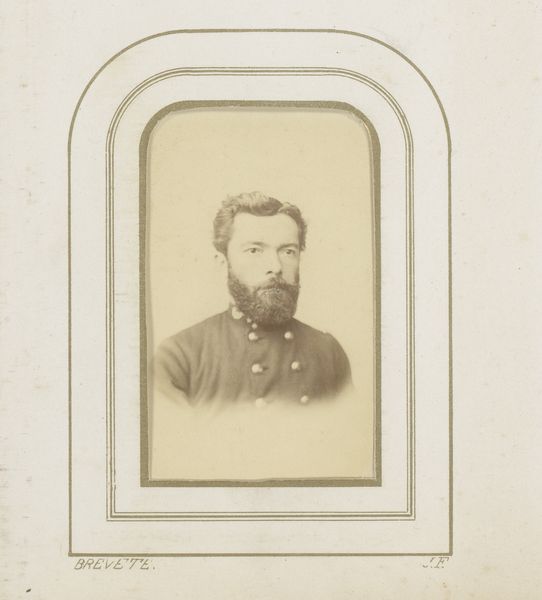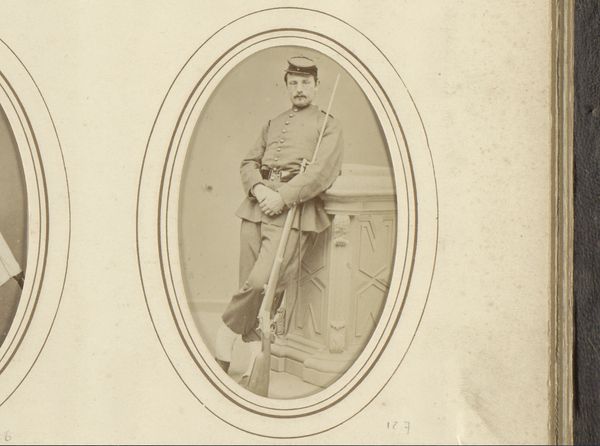
photography, gelatin-silver-print
#
photography
#
historical photography
#
gelatin-silver-print
#
19th century
#
watercolor
#
realism
Dimensions: height 83 mm, width 50 mm
Copyright: Rijks Museum: Open Domain
Curator: This portrait presents a seated man with a beard, created sometime between 1867 and 1875, using the gelatin-silver print method of photography. What are your initial thoughts? Editor: My immediate reaction is one of staged composure. There’s a palpable artificiality, yet I’m also drawn to the detail in his clothing and the manufactured backdrop. Curator: Absolutely. Consider the material conditions required to produce such an image during that era. The collodion process was widespread, demanding meticulous preparation and darkroom skills to transfer onto a gelatin-silver print. Editor: The studio setting tells us a lot. This wasn’t casual documentation; it's a performance for the camera. The painted backdrop suggests aspirations to landscape painting, blending into this social moment. We might examine how early photographic studios played roles in defining the burgeoning middle class, making visual art and portraiture more widely accessible. Curator: The attire of the subject speaks to that new consumer class as well. A dark jacket paired with light trousers, signs of newly acquired and carefully selected materials. The availability and appeal of synthetic dyes likely played a crucial role in democratizing fashion and allowing this self-representation. Editor: Exactly! And while it presents itself as realistic, consider how this photograph might shape public perceptions of the bourgeoisie. Did these types of images enforce or challenge traditional norms? How might such pictures circulated and function within society? Curator: I see this circulation dependent on advances in the material realm of printmaking and photography. Innovations in lenses, chemical processes, and printing papers created a burgeoning market. How the photographic studios strategically consumed those advancements defines them. Editor: Ultimately, it shows how artistic representation often relies upon available material processes and production possibilities to be accessible. The availability of those gelatin-silver prints played a central role in constructing both the art and the consumerism of this social identity. Curator: And the impact those prints had. These photographic advancements certainly democratized representation to make this art possible and widely available in the burgeoning global art world. Editor: Certainly, it reshapes what we conceive to be 'the real,' transforming material and market conditions as society continued rapidly innovating throughout that century.
Comments
No comments
Be the first to comment and join the conversation on the ultimate creative platform.
